How to find the right keywords for your page?
Your goal is to balance what best describes your business offers and what your users search for; that’s all. This article will help you identify the right keyword for the right page on your website.
When someone opens Google, they’re looking to understand, buy, fix, compare, or discover something. That’s the user side.
On the other side, there are businesses — offering products or services and presenting them through websites.

Google sits in between. Its job is to connect users with the most relevant websites. It reads your content, understands what your page is about, and ranks it based on how well it matches the user’s search intent.
If you want your page to show up, you need to speak the language of your users. That starts with finding the right keywords.
Let’s break that process down into three simple steps.
1) What does your business offer?
This is the easiest part — because you already know it. But you need to describe it in a way that search engines (and AI tools) can work with.
To generate relevant root keywords, try using a prompt like this in ChatGPT:
I want to generate root keywords for my business/product/service. Here's the information:
Product/Service: [Describe yours briefly]
Main features: [List your features]
Use cases or customer benefits: [Describe your use cases]
Problems solved: [Describe the pain points for your users]
Target audience: [Define the demographics/needs of your audience]
Based on this information, please provide a list of root keywords that align with the product/service, customer intent, and relevant industry search terms.2) What do people search?
Now that you know your offer, it's time to learn how people look for it.
A) Look at your competitor
Your competitors have already done some SEO work. Learn how they describe their offer and see if we can get inspire.
Tools like SEMrush (paid) or ChatGPT (free) can help you analyze these keywords.
Following is a ChatGPT prompt I use for my friends who don’t have SEMrush:
Analyze the content of [COMPETITOR'S URL] and provide a list of relevant SEO keywords based on the following:
Headings and subheadings (H1, H2, H3).
Page titles and meta descriptions.
Content themes and recurring phrases.
Product or service descriptions.
Blog or article topics.
Please include both primary and long-tail keywords that the competitor might be targeting.B) Ask your users, clients
Talking to your users can reveal a lot. If you have the time and the people available, Ask them for a 10-minute meeting. Then, ask them:
When was the last time you faced [Problem you’re addressing]?
How did you solve it? Can you show me?
First, do they use Google? Maybe they are searching elsewhere (Tiktok, Instagram).
Then, watch and note the keywords they use during their search. This real-world insight is gold.
Don’t have any clients yet? Go to Reddit and find people with the problem you're trying to solve. Note their question and search for keyword repetition. We all need to start somewhere.
Now, you should have a long list of keywords. Let's start ranking and prioritizing them. You don’t need 1000 of them; 100 is more than enough.
3) Priorityze your Keywords.
Not all keywords are equal. Prioritize them based on the intent behind them and their search volume/keyword difficulty. Let’s start.
A) Keyword Intent
Keyword intent is the hidden reason someone is searching for a keyword.
There are three types of keyword intent:
Informational: Searches where users want to learn or understand something, like “How does [product] work?”
Navigational: Searches where users is looking to navigate to a specific part of your website (
Commercial: Searches where users are looking for a specific brand or website, such as “[Brand name] pricing”
Transactional: Searches where users are ready to take action or make a purchase, like “Buy [product] online”
As your users move further along the customer journey, they become more valuable for your business.

To find the keywords intent of your list of keywords, ask chatGPT.
I have a list of keywords. Please sort them into four categories of search intent:
Informational – the user is looking for general information or answers to questions.
Navigational – the user is trying to find a specific website, brand, or product name.
Commercial – the user is researching options before a purchase (e.g. comparisons, reviews).
Transactional – the user intends to complete an action (e.g. buy, sign up, download).
Return the result as a table with two columns:
Keyword
Search Intent
Here is the list of keywords:
[paste your keyword list here]2) Search Volume & Keyword Difficulty
Search volume is how often a keyword is searched monthly.
Keyword difficulty is how hard it is to rank for that term.
The sweet spot is keywords with high volume and low difficulty. These are your best bets for ranking quickly. You don’t see them often, unfortunately.
To check the search volume of keywords, you have 3 options:
1 • Free: Free keywords Generators by Sofian Bettayeb (keyword difficult is poorly accurate because of the Keyword everywhere API)
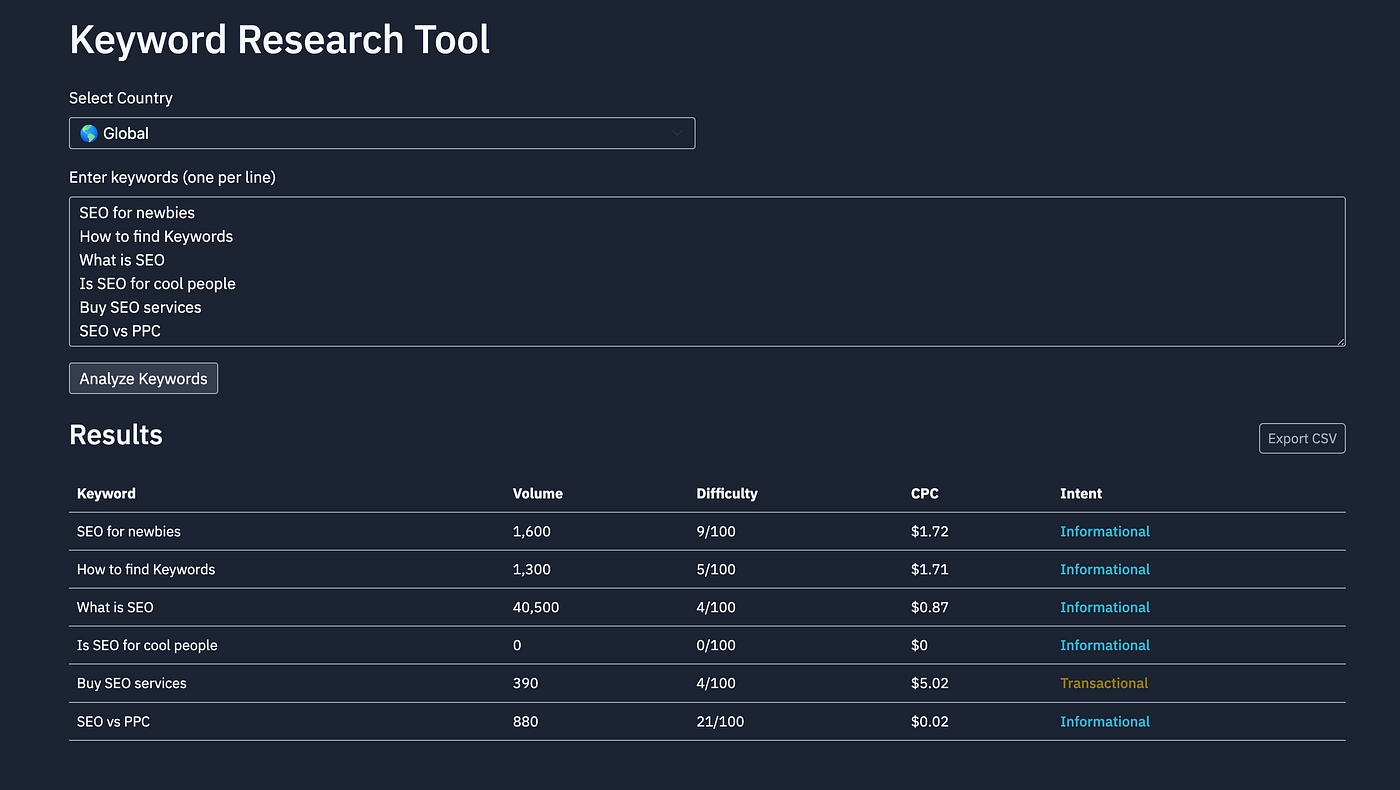
You can copy/paste your chatGPT list of keywords into the text input, choose your country of analysis, and click “Analyse Keywords.”
Then, export the CSV list and move to the next section.
2 • Paid: Tools like SEMrush provide detailed keyword data, including search volume.
For this step, I highly recommend using SEMrush. You can start a free trial and do the steps in less than 7 days. Don’t forget to set an alarm to remove your account after 6 days…
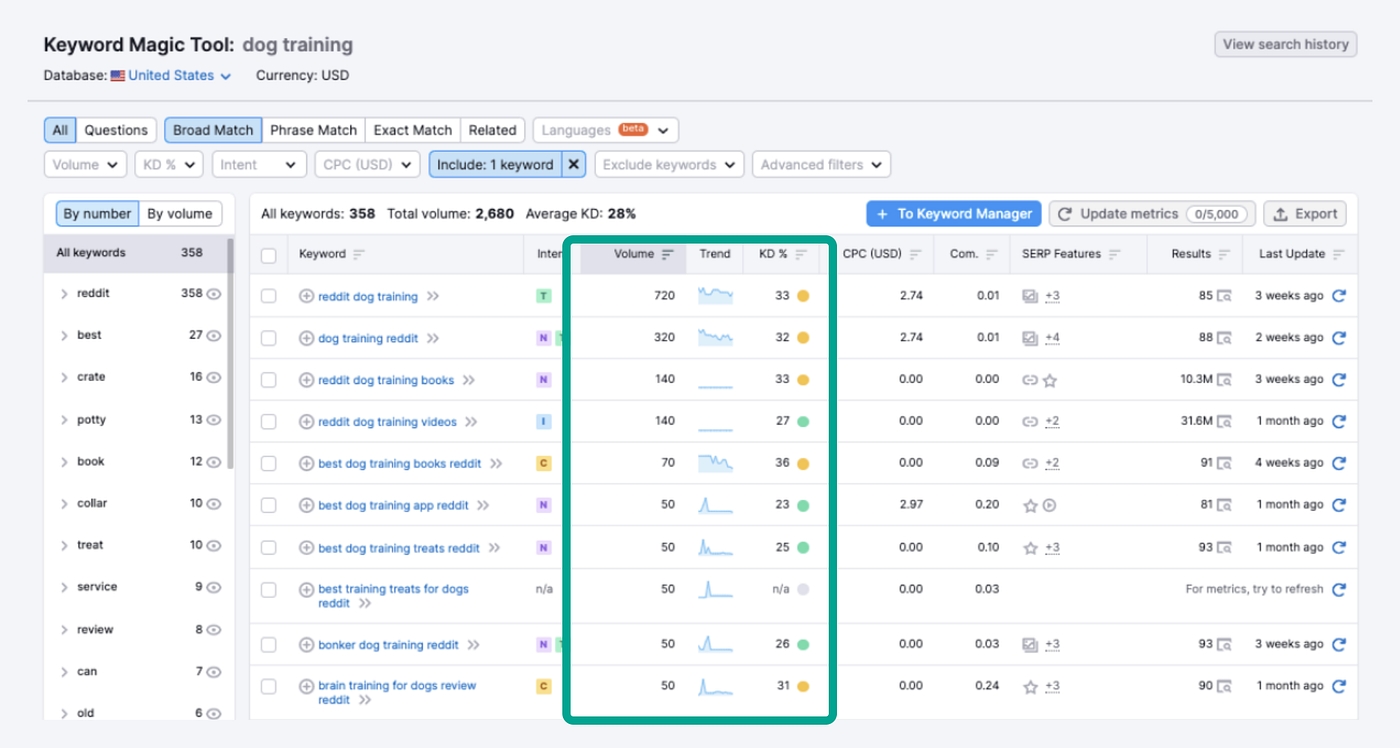
3 • Free: Google Ads’ Keyword Planner offers search volume insights at no cost. The downside is you need to create/have a Google Ads account.
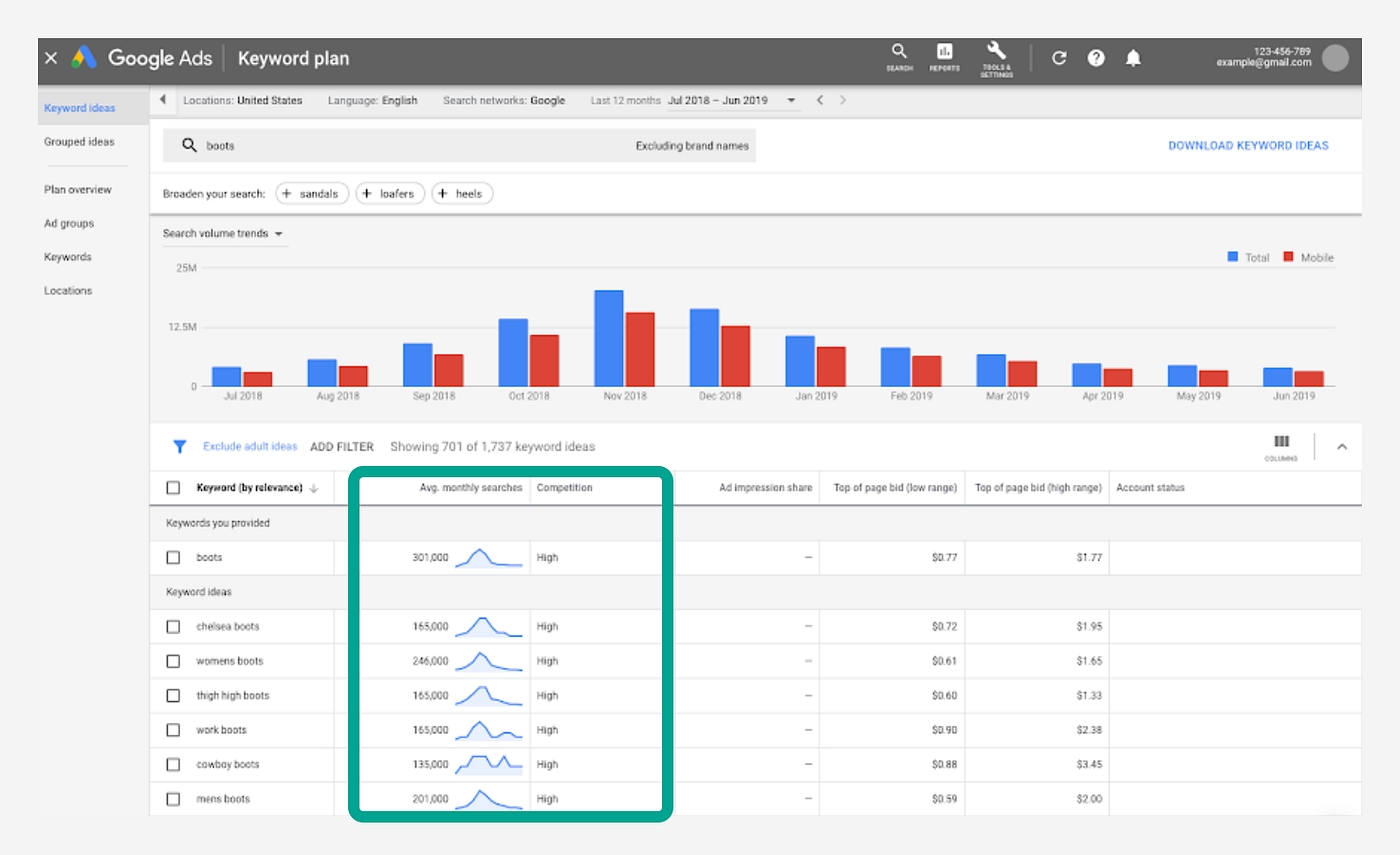
How do you prioritize your keywords?
Prioritize for the Money Keywords
Like I mentioned before, all keywords aren't equal.
On the left, list problem-based keywords (research stage). Those are the keywords we want to rank in the long term.
On the right, list solution-based keywords. The more right, the more valuable the keyword is. Also known as Money Keywords. We want to start ranking those today.

2. Focus on the easy keywords
The more competition, the harder it is to rank for keywords.
For both Information keywords and Money keywords, you want to avoid competition. The easiest way is to get more specifics with your keywords than your competition.
For example, let’s look at some search queries in the USA: SEO agency: KD= 74 (very difficult) and SV = 27 000 (high search volume) Webflow SEO agency: KD = 6 (very easy) and SV = 30 (low search volume)
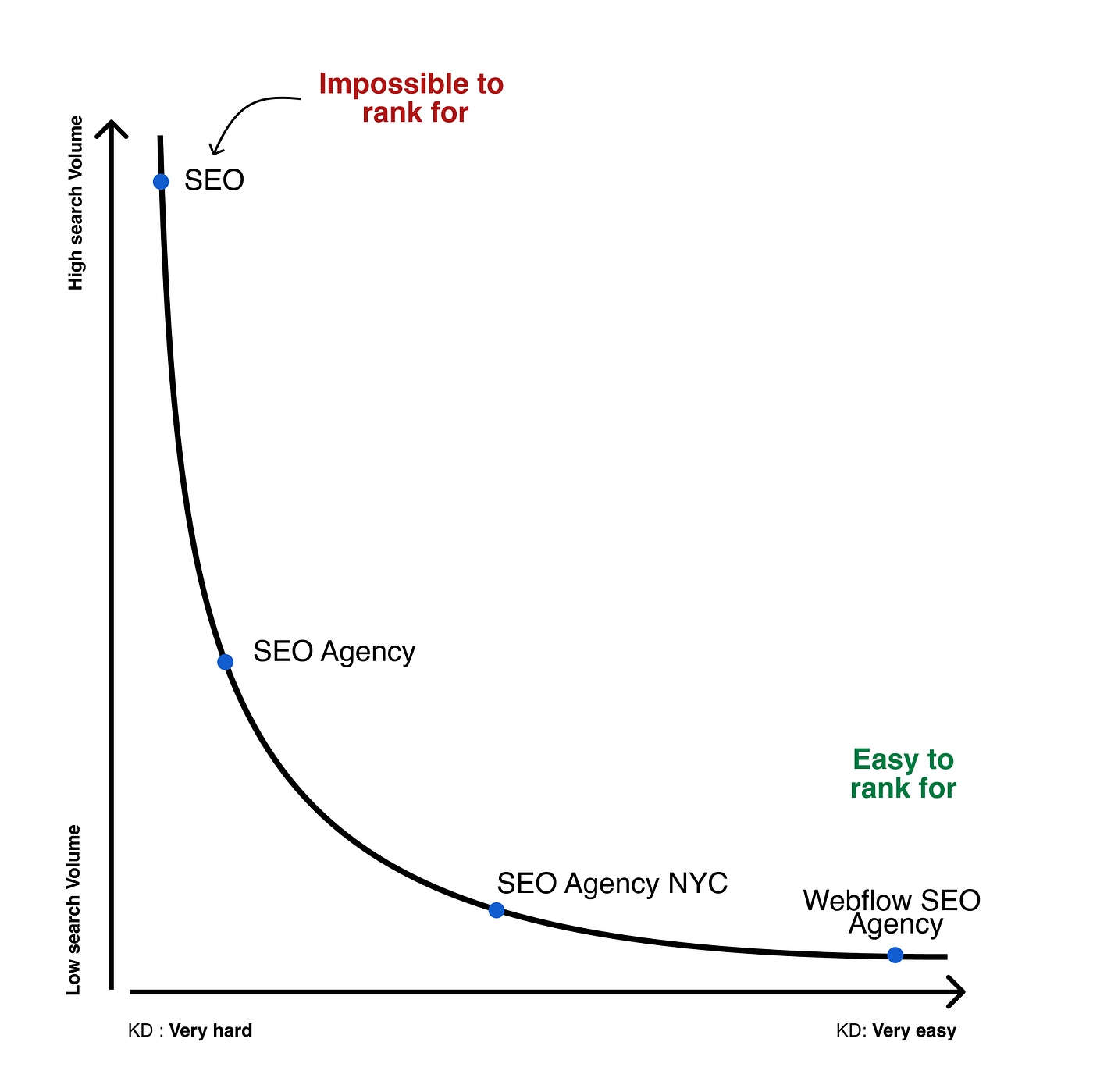
For now, we can start to rank our keywords in a 2 x 2 matrice with Keyword intent on x-axis and search volume on y-axis.
When sorting the keywords, you should easily be able to put them in one of the four area like below.
Top-left (Informational / High volume) -> Pillar pages “I set Pillar pages for long-term results”
These are cornerstone content pieces (e.g., ultimate guides) targeting hard but high-volume informational keywords.
Goal: Rank high over time by building authority.
Bottom-left (Informational / Low volume) -> Cluster pages “I write content pages for long-term results”
Supporting content with lower volume but still competitive.
Goal: Fill gaps, support pillar pages, and build topic clusters.
Top-right (Money keywords / High volume) -> Landing pages “I buy the keywords for immediate results”
Paid ads (PPC) are used to target hard, competitive commercial keywords.
Goal: Drive conversions quickly via landing pages.
Bottom-right (Money keywords / Low volume) -> Product / services pages “I optimize my product/service pages for short-term results”
Focused SEO on product/service pages using easier commercial keywords.
Goal: Get faster organic wins with less competition.
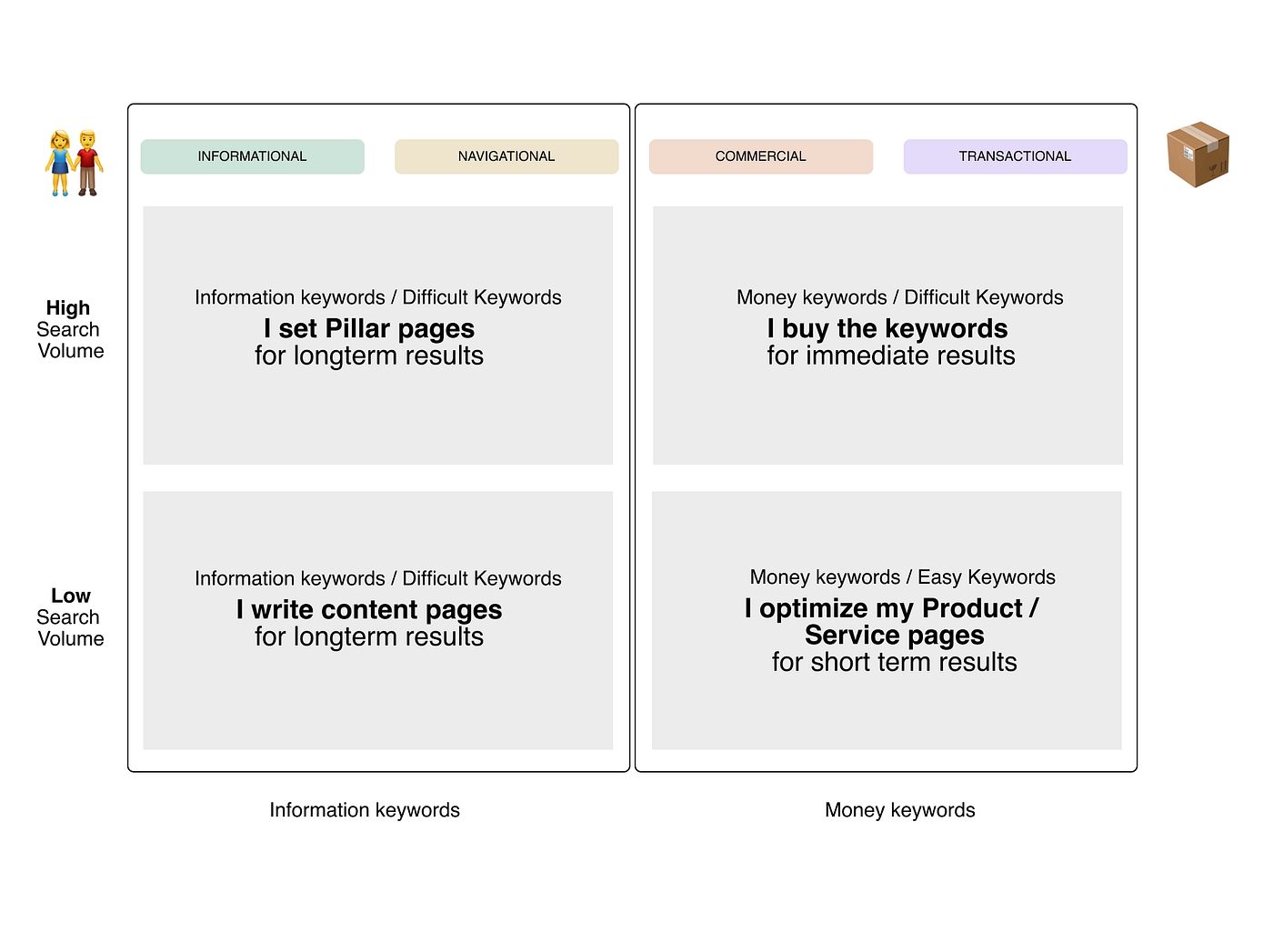
Conclusions
Now, you should have a clear understanding of which keywords to focus on and what kind of page you need.
The next step, of course, is to optimizing the content of your page for the keywords. And AI SEO Copilot is your best friend for this task.
Last updated
Was this helpful?

